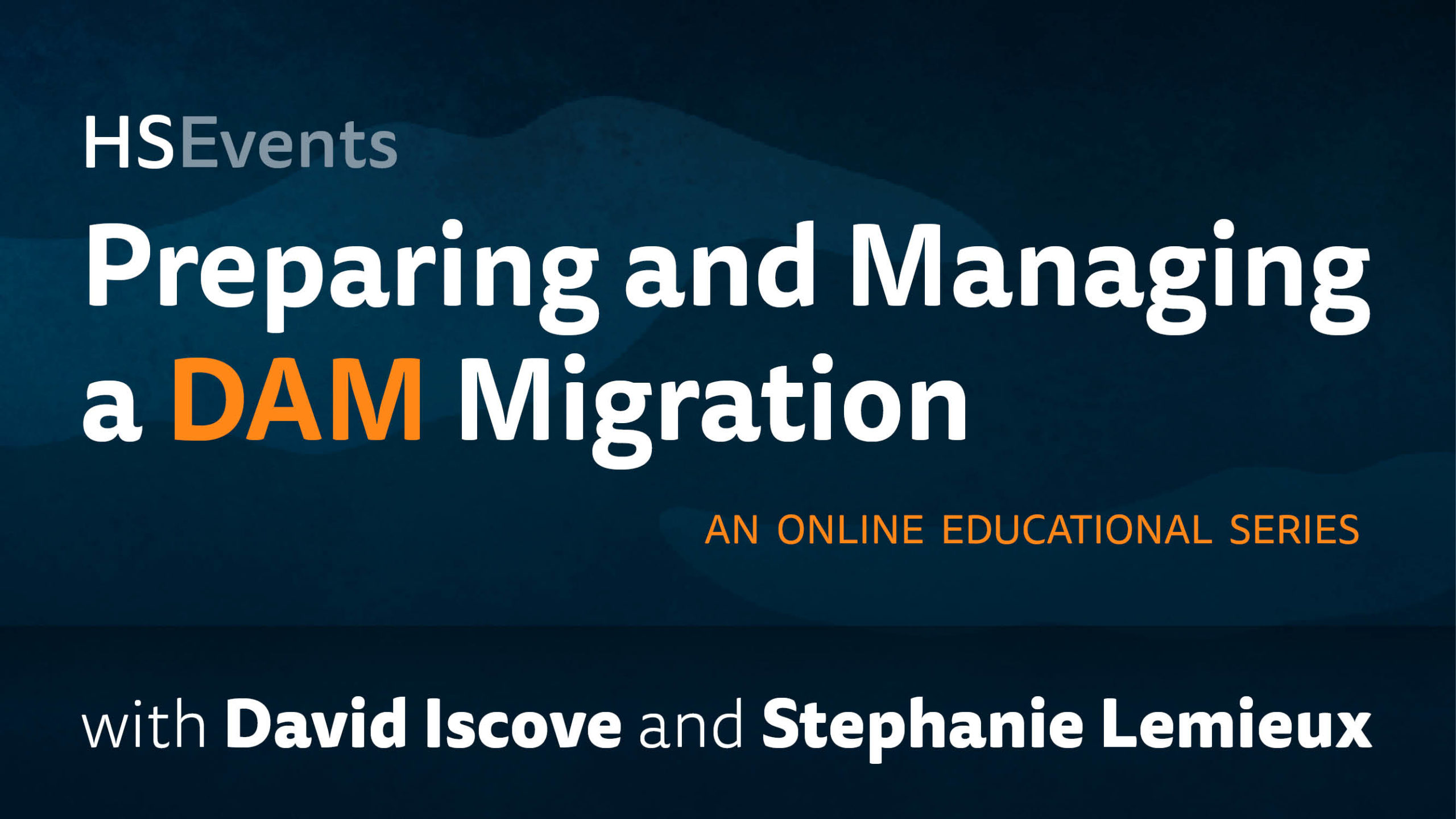I recently polled my DAM consultant friends with this question: what’s the one thing you wish people knew before they started a DAM implementation project to improve their outcomes? There was a clear trend in the answers: migrating assets and metadata is hard and it will take longer and more resources than you think.
Whether you’re starting fresh with your first DAM implementation or you’re upgrading to a new platform, content migration is a key workstream in a DAM project and requires quite a bit of upfront preparation and planning. Unfortunately, there’s not a lot of specific guidance on this topic out there, beyond the often vague advice to “inventory your content” and “take time to clean up your metadata”.
To help close this gap, I’ve been working with David Iscove on a 4-part training course that covers all the key aspects of preparing for a DAM migration, which will be held October 4-25 with Henry Stewart Events.

A successful migration has a lot of moving parts, from planning what will be migrated based on organizational priorities and change management strategy, to preparing the files both logically and physically for migration, to the actual migration and QA of the assets in the production system.
Having a clear migration strategy and project plan is a key first step, as there are a lot of decisions to make up front that will guide the timeline as well as the resourcing needed. The strategy covers key elements such as scoping and phasing of migration, including what business units are involved, which collections will be moved and how they will be sequenced (prioritization), and whether there will be a freeze or a delta migration of in-flight assets during the move.
When planning it’s also important to understand the full range of migration preparation activities and clearly identify resources for these workstreams. DAM vendors typically help with ingestion but not necessarily with metadata cleansing or cross-mapping, file consolidation, or duplicate detection.
Another consideration in your migration strategy is planning for improvements to metadata both at the schema level (what fields are required or available for different types of assets) and at the data level. A migration is the perfect time to correct problems with metadata, including overcomplicated schemas (too much metadata), under-specified schemas (not enough metadata) and poor metadata quality (fields with incorrect, inconsistent or missing metadata). All these types of changes to the asset metadata structure do however require that you plan additional activities and resources for data transformation and normalization. This typically involves things like mapping fields, writing normalization rules, and extracting metadata from existing file paths or naming conventions.
At the end of the day, however, we’re ultimately talking about moving files from one location to another, but, before you assume that sounds easy, it’s important to consider a variety of considerations which scale complexity as the volume of content increases. It’s very rare that ALL content within a repository is migrated. More often than not, only certain selections of content or particular content types are intended to be migrated. So how do you move only those files which are interspersed among files that you don’t want to move, especially when dealing with millions of files potentially? It’s crucial to identify tactics which allow you to automate this in bulk.
If all that sounds overwhelming, join David and I this October so we can give you the information and tools you need to successfully plan your migration and deliver maximum value into your new DAM.
Upcoming live sessions:
October 4, 2022 – Session 1: Scoping and Preparing for a DAM Migration
October 11, 2022 – Session 2: DAM Metadata, Taxonomy and Migration
October 18, 2022 – Session 3: File Management, Technical Migration and Post-Migration QA
October 25, 2022 – Session 4: Migration Project Management